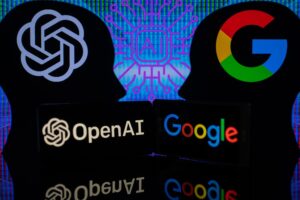The vital difference between machine learning and generative artificial intelligence
Artificial intelligence (AI) is transforming our world, but in this broad field, two different technologies often confuse people: machine learning (ML) and generative AI. While both are innovative in their own right, they serve very different purposes and work in unique ways. Let’s dive into what sets them apart and explore their respective roles in today’s technology landscape.
Understanding Machine Learning
Machine learning is a subset of AI that focuses on building systems capable of learning from data, identifying patterns, and making decisions with minimal human intervention. These systems improve over time as they are exposed to more data, honing their ability to make accurate predictions or decisions.
How Machine Learning Works
At its core, machine learning involves feeding large amounts of data into algorithms that can analyze that information and learn from it. This process often involves:
- Data collection: Gather relevant data from which the model will learn.
- training: Using this data to teach the model to recognize patterns.
- Validation and testing: Ensuring that the model works well with new, unseen data.
Machine learning can be supervised, unsupervised or semi-supervised. In supervised learning, models are trained on labeled data, meaning that the input is matched with the correct output. Unsupervised learning, on the other hand, deals with unlabeled data and the model tries to identify patterns and relationships in the data on its own. Semi-supervised learning combines both approaches.
Real-world applications of machine learning
Machine learning is ubiquitous in our daily lives. Here’s a few examples:
- Predictive models in finance: Algorithms analyze market trends and historical data to predict stock prices or assess credit risks.
- Recommender systems: Platforms like Netflix and Amazon use ML to suggest movies, products or books based on your past behavior and preferences.
- Health diagnostics: Machine learning helps diagnose diseases by analyzing medical images or patient records more effectively than human doctors.
Generative AI: A Different Beast
Generative AI is a class of AI that goes beyond analyzing data to create new content—be it text, images, music, or even video—that mimics human creations. Rather than simply making decisions or predictions based on input data, generative AI can generate new data that is not explicitly programmed into it.
How Generative AI works
Generative AI models often use neural networks, especially a type known as Generative Adversarial Networks (GANs), Variational Autoencoders (VAEs), or Large Language Models (LLMs). Here’s a simplified breakdown of the process:
- LLMs: These models, GPT-4o, LLAMA or Google Gemini, are trained on huge amounts of text data and can generate human text by predicting the next word in a sentence based on the context provided by previous words. They excel at tasks such as language translation, content creation, and conversational agents.
- GANs: It consists of two neural networks – a generator and a discriminator – that work against each other. The generator creates new data instances while the discriminator evaluates them. Through this competitive process, the generator improves its ability to produce realistic data.
- VAEs: Use probabilistic models to generate new data, allowing the creation of diverse and novel outputs based on learned representations of the inputs.
Real-world applications of Generative AI
Generative AI is becoming increasingly popular and versatile. Some notable examples include:
- Chatbots and virtual assistants: Tools like ChatGPT can generate human text based on the prompts they receive, making customer service interactions more natural and engaging.
- Deepfake technology: AI can create highly realistic video and audio recordings that look real, raising both exciting possibilities and ethical concerns.
- Art and music: AI-generated artwork and musical compositions offer new avenues for creativity, allowing artists and musicians to explore innovative ideas.
Key differences between machine learning and generative artificial intelligence
While machine learning and generative AI are subsets of artificial intelligence, their main distinction is in their purpose and outcome.
- Purpose: Machine learning focuses on understanding and making predictions based on existing data. Generative AI, however, aims to create new data that mimics human creations.
- Exit: Machine learning produces decisions or predictions. Generative AI produces new content, such as text, images or music.
- Applications: Machine learning is used for tasks such as recommender systems, predictive analytics, and diagnostic tools. Generative AI is used in creative fields, deepfakes and advanced simulations.
The synergy between machine learning and generative artificial intelligence
Despite their differences, machine learning and generative AI can complement each other in powerful ways. For example, machine learning algorithms can improve the performance of generative AI models by providing better training data or refining the evaluation process. Conversely, generative AI can improve machine learning by creating synthetic data to train models in scenarios where real-world data is scarce or expensive to obtain.
The Future of AI: Collaboration and Innovation
As AI continues to evolve, the lines between machine learning and generative AI may blur, leading to even more complex and flexible systems. Businesses and industries are already using these technologies to drive innovation, improve productivity and create new customer experiences.
For example, in healthcare, machine learning can predict patient outcomes and suggest treatments, while generative AI can create personalized medical content or simulate potential drug interactions. In entertainment, machine learning curates content based on user preferences, while generative AI creates new music or artwork tailored to individual tastes.
Understanding the difference between machine learning and generative AI is critical to understanding the full scope of AI’s impact on our world. While machine learning excels at analyzing data and making predictions, generative AI pushes the boundaries of creativity by generating new and innovative content. Both technologies are changing industries, improving our daily lives and opening up exciting possibilities for the future. As we continue to explore their potential, the collaboration between machine learning and generative AI will undoubtedly lead to the next wave of technological advancement.



